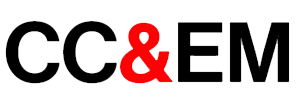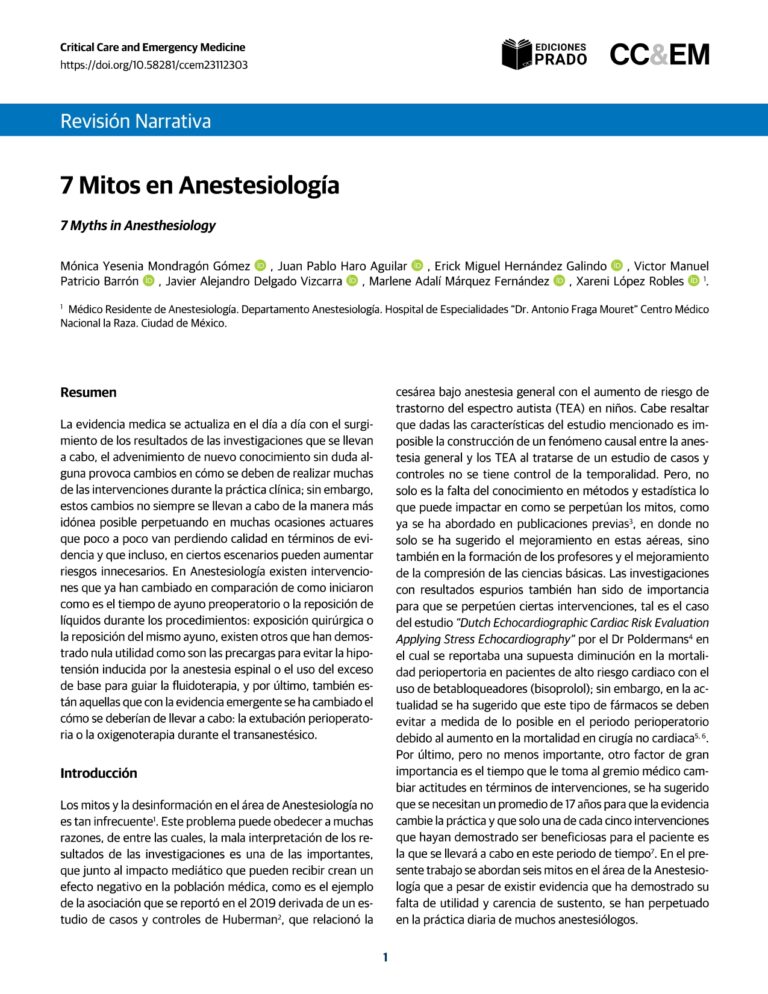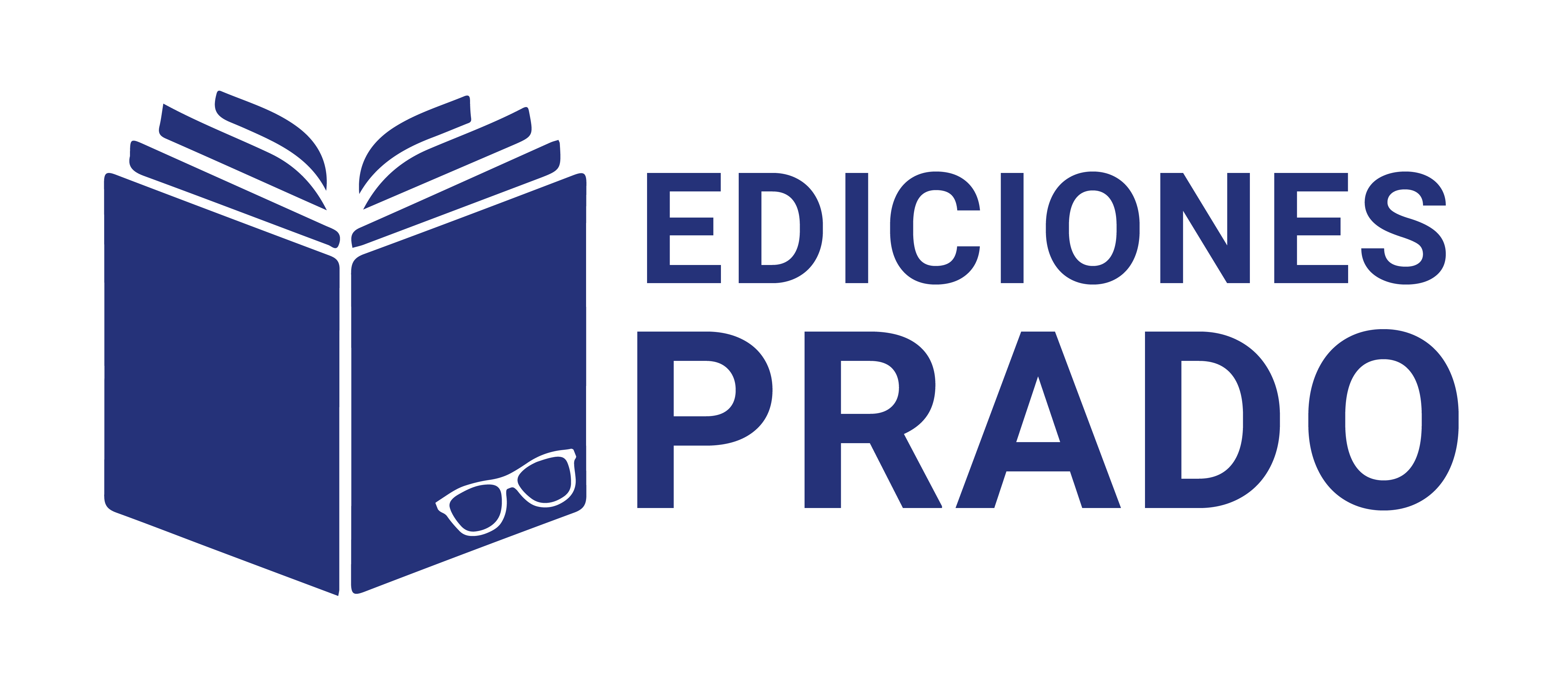7 Mitos en Anestesiología.
https://doi.org/10.58281/ccem23112303
23/11/2023
7 Myths in Anesthesiology
Mónica Yesenia Mondragón Gómez 1 ![]() , Juan Pablo Haro Aguilar 2
, Juan Pablo Haro Aguilar 2 ![]() , Erick Miguel Hernández Galindo 3
, Erick Miguel Hernández Galindo 3 ![]() , Victor Manuel Patricio Barrón 4
, Victor Manuel Patricio Barrón 4 ![]() , Javier Alejandro Delgado Vizcarra 5
, Javier Alejandro Delgado Vizcarra 5 ![]() , Marlene Adalí Márquez Fernández 6
, Marlene Adalí Márquez Fernández 6 ![]() , Xareni López Robles 7
, Xareni López Robles 7 ![]()
.
1 moni05km@gmail.com
2 docharo07@gmail.com
3 erickhg24@hotmail.com
4 beatlevic@icloud.com
5 alexdelgado9211@gmail.com
6 ahome_sibang@hotmail.com 7 xareni.lopz.robles@outlook.com
Médico Residente de Anestesiología. Departamento Anestesiología. Hospital de Especialidades “Dr. Antonio Fraga Mouret” Centro Médico
Nacional la Raza. Ciudad de México.
RESUMEN
Introducción: La evidencia medica se actualiza en el día a día con el surgimiento de los resultados de las investigaciones que se llevan
a cabo, el advenimiento de nuevo conocimiento sin duda alguna provoca cambios en cómo se deben de realizar muchas de las intervenciones durante la práctica clínica; sin embargo, estos cambios no siempre se llevan a cabo de la manera más idónea posible perpetuando en muchas ocasiones actuares que poco a poco van perdiendo calidad en términos de evidencia y que incluso, en ciertos escenarios pueden aumentar riesgos innecesarios. En Anestesiología existen intervenciones que ya han cambiado en comparación de como iniciaron como es el tiempo de ayuno preoperatorio o la reposición de líquidos durante los procedimientos: exposición quirúrgica o la reposición del mismo ayuno, existen otros que han demostrado nula utilidad como son las precargas para evitar la hipotensión inducida por la anestesia espinal o el uso del exceso de base para guiar la fluidoterapia, y por último, también están aquellas que con la evidencia emergente se ha cambiado el cómo se deberían de llevar a cabo: la extubación perioperatoria o la oxigenoterapia durante el transanestésico.
abstract
Introduction: Medical evidence is updated on a daily basis with the emergence of the results of the research that is carried out. The advent of new knowledge undoubtedly causes changes in how many interventions should be carried out during clinical practice; however, these changes are not always carried out in the most suitable way possible, often perpetuating actions that gradually lose quality in terms of evidence and that, in certain scenarios, can even increase unnecessary risks. In Anesthesiology, there are interventions that have already changed compared to how they started, such as preoperative fasting time or fluid replacement during procedures: surgical exposure or replacement of fasting itself. There are others that have shown no utility, such as preloads to avoid hypotension induced by spinal anesthesia or the use of excess base to guide fluid therapy, and finally, there are also those that, with emerging evidence, have changed how they should be carried out: perioperative extubation or oxygen therapy during transanesthesia.


